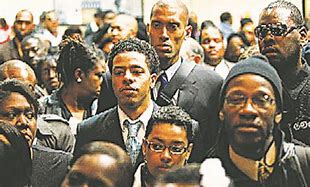
America’s Black Problem
By Barrington Martin II

If you are black in America, you are indoctrinated to believe that your skin color represents immutable burdens exclusive to only you and those within your racial group. The programming is so effective that it is passed down from generation to generation as if it’s a shared cultural understanding among your entire racial group.
This tradition is constantly upheld and reemphasized through political grandstanding, but mainly through news media. It doesn’t matter that from 1980 to 2008 black men made up 6 percent of the U.S. population yet committed 52 percent of the homicides (pdf). It doesn’t matter that black Americans have the highest rate of single-motherhood and non-marital births (pdf) in the country. It doesn’t even matter that in 2019 less than one in five black American eighth-grade students were reading at a proficient level. In fact, reading proficiency levels are more than likely to be worse now as a result of the COVID-19 pandemic policies. All that appears to matter is the traditional belief that these conditions exist solely because of racism in spite of a multitude of factors devoid of racism that deliver these staggering statistics.
In 1965, Assistant Secretary of Labor Daniel Patrick Moynihan introduced to the United States what is known as the Moynihan Report. The report titled “The Negro Family: The Case for National Action” focused on the disparities between black and white Americans. He found that the fundamental problem leading to poor outcomes among black Americans was the breakdown of the black family structure and not structural barriers, as it was believed. Moynihan deemed this to be an emergency at the time, thus he called for a national coordinated effort to strengthen the black family unit. His report was greatly ostracized and rejected by many pro-black critics, although many, if not all of his assertions were right. Fifty-seven years later, Moynihan’s report has evolved from an exclusively black problem to an American problem we are currently witnessing.
The degradation of culture and societal norms has given way to many of the problems that exist currently within the nation. What were once identified as black problems are now American problems.
“Illegitimacy levels that were viewed as an aberration of a particular subculture 25 years ago have become the norm for the entire culture,” Moynihan told The Washington Post in 1991.
Since 1965, there have been significant changes in the dynamics of the American family structure in the United States. For example, in 1968 only 11 percent of children in America lived in a home with a single mother. By 2014, that number had risen to 24 percent, almost tripling among white children from 6 percent to 19 percent. Furthermore, in 1965, almost 8 percent (pdf) of all children were born to unwed mothers. About 50 years later, over 40 percent (pdf) of children in the United States were born out of wedlock with an increase from 4 percent to about 29 percent among white children. According to analyses by a non-profit known as Child Trends, the number of children born to unwed mothers continues to increase regardless of the education level of the mother. Marriage rates continue to decrease, with blacks and Hispanics having the most substantial declines among all racial groups.
If the breakdown of the family unit was not perceived as an exclusively black issue and treated with the same sense of urgency as racism and white supremacy, there would be a potential for progress in this country toward implementing the proper solutions to solve our societal ills. When the United States has the world’s highest rate of children in single-parent homes, it makes sense as to why our nation is struggling.
Research conducted using data from the U.S. Department of Labor’s Panel Study of Income Dynamics provided estimates between family situations and future educational attainment. The data showed that within an 11-year period from 1988 to 1999, 24-year-olds who were raised in single-parent homes as teenagers had two-thirds of a year less schooling than those who were raised with both parents. By 2009, the gap had increased to nearly one and one-third years of schooling.
We must promote and encourage accountability in our children instead of selling them dreams of one-size-fits-all policies that have proven not to work.
Family has always been the bedrock of success and a first-class ticket to the American dream. In fact, research illustrates that 97 percent of Millennials (pdf) who have obtained at least a high school diploma, have stayed out of prison, work, and married prior to having children are not poor by their late 20s to early 30s.
A better government is less government, and less government is only possible with great people. Great people are only possible through great families, and great families create great communities. Great communities create great cities, and great cities create great states. Great states combine to make a great nation but, more importantly, a strong, unified nation.
Family will change the course of this nation, but it will take an all-hands-on-deck approach supplemented with the necessary policies that will subsidize good behaviors. Government isn’t meant to replace the family or community. It’s time to get back to basics and do the necessary work needed to make the family great again. The sanctity of marriage must be respected. The sacredness of motherhood must be cherished, and men must be strong and honorable fathers. The future of this nation will be decided by the state of the family.

Comments (0)